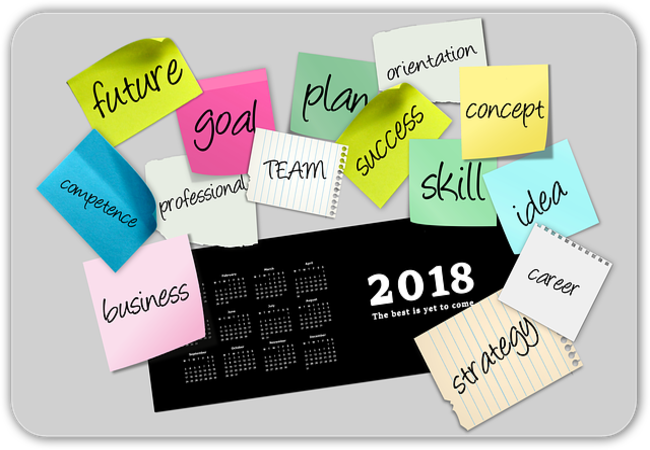Ask leaders of organizations that follow Six Sigma as a management philosophy, and they will disagree.
- Customer Centricity
- Data or Fact Based Decision Making
- Strong Process Orientation
- Structured way to improve, design and sustain processes
Let’s consider 4 important dimensions of leadership that most world class organizations strive to instil in their associates.
- Ability to grow the business
- Capability to lead the team to deliver
- Drive culture of execution
- Conviction to sustain the momentum & optimism
Let us consider one at a time, and understand how Six Sigma can help focus on these 4 aspects.
Ability to grow the business
- Deep and broad business perspective is the first and foremost pre-requisite for any leader to growth their business. They have the ability to fragment or aggregate processes/tasks, and develop a meaningful understanding. Good leaders are quick to break complex processes into simple & small units, and manage them effectively. We call this ability as Strong Process Orientation in Six Sigma.
- Good leaders challenge the status quo, and thereby reinvent the business. Availability of information & factual data empowers a leader to take bold decisions.
- Businesses that are customer centric grow faster . Moreover customer requirements constantly change. Ability to choose the right method to reach out to customer, ask the right questions and present the data appropriately is the key. In other words, good leaders take additional care to establish and manage Voice of Customer programs.
- Customer retention and repeat business is all about instilling higher internal standards and practices to make processes error-free or defect-free.
Capability to lead the team to deliver
- In order to retain great talent, a leader should be able to align functional goals to individual’s KPI’s. They should use data to differentiate high and poor performers rather than intuition and gut feeling.
- A good leader’s ability to communicate crisply and candidly is only possible when they are data centric.
Drive Culture of Execution
- Results need to consistent. Great leaders manage variation along with averages. One of the primary goals of Six Sigma is to reduce Variation.
- Data or fact based decisions result in high probability of success. This means more confidence about the team and better alignment.
Conviction to sustain the momentum & optimism
- Constantly raising the bar is possible when one understands the CTQs, key drivers of the business, and process capability very well.
- Displaying personal courage cannot come without confidence. And confidence comes only with data.
So a good leader will not miss a single opportunity to apply the above principles of Six Sigma in their business to deliver results consistently.
That is why at many world class organizations, Six Sigma is in the fabric of who they are. So, beyond doubt, Six Sigma help me become a better leader!
Tags
Here are my observations based on not just training a few hundred Six Sigma Green Belts across different demographics of geography, industry and age group, but also having mentored them for few months after the training:
- Retention of a subject like Six Sigma is much less than soft-skills or technical training like software languages.
- Ability of Green Belts to relate the application of six sigma concepts to their line of business is quite lesser than soft-skills like team work, time management, negotiation skills, etc.
Here are the 10 things according to me that Six Sigma Green Belts forget within just 10 -days of attending a training program, implying nearly zero retention:
- Project Charter: How to a write a business case that convinces the management? And also differentiate it from Problem Statement.
- Fish-Bone: What to do after completing a Fish-Bone diagram? Of course, collect data but on what factors?
- Gage R&R: Conduct an live Gage R&R study (at least Discrete data).
- Sampling: Choosing a sampling scheme and deciding the sample size for data collection.
- Descriptive Statistics: Meaningful and practical interpretation of ‘Standard Deviation’. If there is a process with Standard Deviation of 5 minutes, what does this number mean in real sense?
- P-value: What does it mean to the business to accept or reject a hypothesis based on P value?
- Variation: Identify the major sources of variation that impact a project metric?
- Regression: How to use the regression equation to operate the business efficiently.
- Control Chart: Explain to a layman (probably a Manager) what an out-of-control data point means in practical sense.
- Sustenance: How to make sure the project exists after a year. I don’t mean the project deck! Many times, it is considered that sustenance is not in our hands, but actually it is a skill that can be acquired and needs to be taught to all Green Belts.
One of the primary reasons, why Green Belts can’t retain these 10 things, is because most of all this is taught in less than a week with little time for things to settle in, and for the participants to relate.
One of the solutions, that works well for me as a coach, is to limit the class size to 2 or 3 and spread the program over 60 days. I actually found best results during my one-on-one training sessions!
Return-on-Investment of such executive development programs are at most important and so the business & career benefits recoups these investments.
My note will be incomplete if I don’t mention about few things that Six Sigma Green Belt retain very well after the training, even for several years:
· How to do Fish-Bone Diagram?
· How to play the Gage R&R game?
· Remember and recite the phrase “P is low, Null must go”
· How to map the process?
· What is Value Add, and Non-Value Add?






